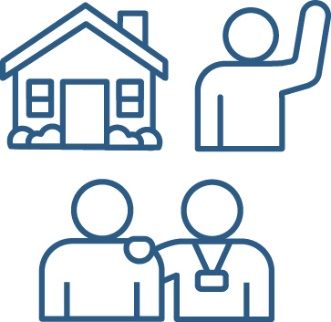Understanding a person’s needs and experiences
|
|
In this bulletin, we look at another idea from the research about positive behaviour support. |
|
|
|
An important part of positive behaviour support is understanding:
This can help to understand a person’s behaviour. |
|
|
|
The research tells us that there are 3 things that can affect:
|
|
|
|
1. Their body. |
|
|
|
For example:
|
|
|
|
2. Their mind. |
|
|
|
For example:
|
|
|
|
3. The people around them. |
|
|
|
For example:
|
|
|
|
We should think about how these 3 things:
|
|
|
|
If everyone thinks about these 3 things, it can help carers to understand:
|
|
|
|
In our next bulletin, we’ll look at another of the 12 ideas from the positive behaviour support research. |
|
|
The next idea is about support that focuses on understanding what a person needs, through:
|












